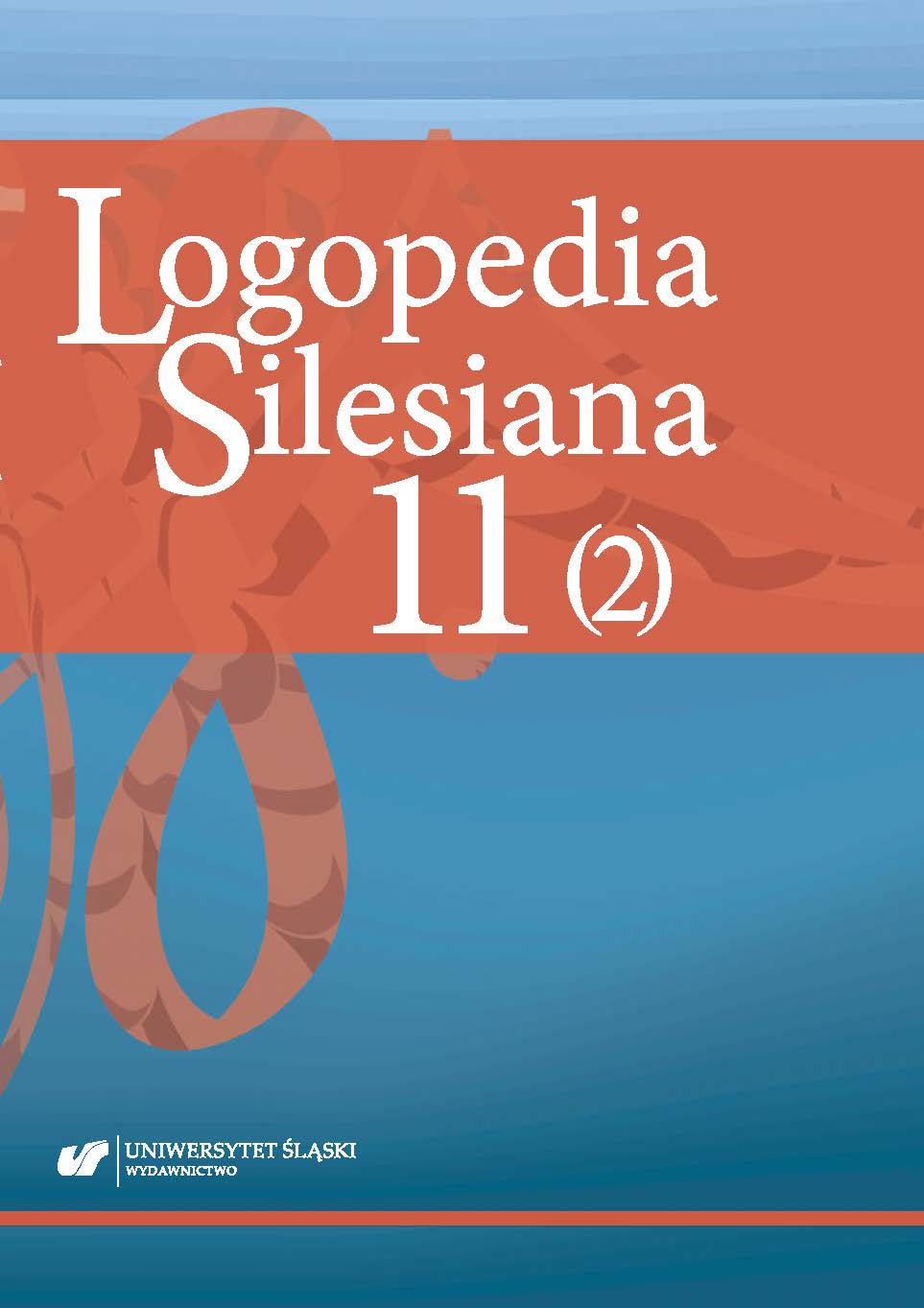Antonovsky, A. (1991). Health, stress and coping. New perspectives on mental and physical well-being. Jossey-Bass Publishers.
Google Scholar
Białecka-Pikul, M. (2007). O potrzebie nowego spojrzenia na zaburzenia rozwoju. Sztuka Leczenia, 14 (1–2), 13–24.
Google Scholar
Brzezińska, A. I. (2020). Rozwój w okresie dzieciństwa i dorastania. Środowisko rozwoju, zadania rozwojowe, nabywane kompetencje. W: I. Grzegorzewska, L. Cierpiałkowska, A. R. Borkowska (red.), Psychologia kliniczna dzieci i młodzieży (s. 63–107). Wydawnictwo Naukowe PWN.
Google Scholar
Brzeziński, J. M. (2019). Metodologia badań psychologicznych. Wydawnictwo Naukowe PWN.
Google Scholar
Czaplewska, E. (2012). Diagnoza zaburzeń rozwoju artykulacji. W: E. Czaplewska, S. Milewski (red.), Diagnoza logopedyczna (s. 65–120). Gdańskie Wydawnictwo Psychologiczne.
Google Scholar
Danielewiczowa, M. (2016). Dosięgnąć przedmiotu. Rzecz o Ferdynandzie de Saussurze. Wydawnictwo Uniwersytetu Warszawskiego.
Google Scholar
Gorbaniuk, O. (2016). Wykorzystanie procedury sędziów kompetentnych w naukach społecznych i możliwości jej oceny psychometrycznej za pomocą narzędzi dostępnych w Statistica. www.media.statsoft.pl/pdf/czytelnia/wykorzystywanie_procedury_sedziow_kompetentnych.pdf.
Google Scholar
Jauer-Niworowska, O., Emiluta-Rozya, D. (2021). Logopedyczne i psychologiczne aspekty diagnozowania zaburzeń mowy. Wydawnictwo Akademii Pedagogiki Specjalnej.
Google Scholar
Kazanecka, E., Borowiec, A., Szkiełkowska, A. (2015). Czynność nadgłośniowa gardła i krtani towarzysząca wyrażaniu emocji. Nowa Audiofonologia, 4(1), 55–59.
Google Scholar
Kielar-Turska, M., Lasota, A. (2010). Strategie komunikacyjne stosowane przez matki w interakcji z małym dzieckiem. Psychologia Rozwojowa, 15(1), 47–60.
Google Scholar
Liberek, J. (2021). Norma językowa jako fakt społeczny fundowany na uzusie. Uwagi w kontekście Słownika właściwych użyć języka. Język Polski, 2, 34–48. https://doi.org/10.31286/JP.101.2.3
Google Scholar
Markowski, A. (2018). Kultura języka polskiego. Teoria. Zagadnienia leksykalne. Wydawnictwo Naukowe PWN.
Google Scholar
Michalik, M. (2020). Sprawności językowe w ujęciu lingwistyki edukacyjnej a wybrane problemy logopedii artystycznej. W: B. Kamińska, S. Milewski (red.), Logopedia artystyczna (s. 69–77). Harmonia Universalis.
Google Scholar
Pisarek, W., Reczek, J. (2000). Norma językowa. W: S. Urbańczyk, M. Kucała (red.), Encyklopedia języka polskiego (s. 253–254), Ossolineum.
Google Scholar
Przybyla, O., Woźniak, T. (2015). Raport Projektu NetQues for Speech and Language Therapy Education in Europe. Logopedia Silesiana, 4, 415–438.
Google Scholar
Sambor, B. (2017). Skaza dykcyjna czy wada wymowy? Analiza badań realizacji fonemów spółgłoskowych u młodych adeptów sztuki teatralnej [niepublikowana rozprawa doktorska] Uniwersytet Śląski w Katowicach.
Google Scholar
Szkiełkowska, A., Miaśkiewicz B. (2014). Zastosowanie testu uwagi i lateralizacji słuchowej w dysfonii dziecięcej. Otorynolaryngologia, 13(4), 197–204.
Google Scholar
Wysocka, M. (2013). Metody terapii czynnościowych zaburzeń głosu. Logopedia, 42, 193–202
Google Scholar


 https://doi.org/10.31261/LOGOPEDIASILESIANA.2022.11.02.01
https://doi.org/10.31261/LOGOPEDIASILESIANA.2022.11.02.01

 10.31261/LOGOPEDIASILESIANA
10.31261/LOGOPEDIASILESIANA